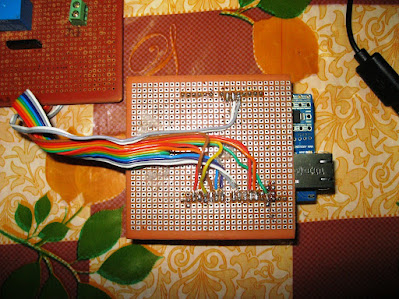Arduino is the most ubiquitous development platform, period. Anyone who has entered the world of DIY electronics most probably started off with an Arduino. The reasons for this are it's ease, the enormous amount of documentation in the form of wikis, code samples, video tutorials, etc.
But there comes a point when the Arduino just isn't enough for your needs. You need more muscle.
Enter BeagleBone Black.
A 1Ghz, 512MB RAM "mini-computer" with 2 GB of onboard memory.
At $45, its in the competitive price range of the RaspberryPi (35$), pcDuino(59$), etc.
It comes from one of the oldest players in the Embedded Linux worlds, Beagleboard.org. It's their 4th ARM dev board, and the 1st in this price range (previous boards were Beagleboard, Beageboard xM and the Beaglebone white).
Pros as compared to the Pi:
Since the Pi has gained a lot of popularity, it's easier to compare it with that.
But there comes a point when the Arduino just isn't enough for your needs. You need more muscle.
Enter BeagleBone Black.
A 1Ghz, 512MB RAM "mini-computer" with 2 GB of onboard memory.
At $45, its in the competitive price range of the RaspberryPi (35$), pcDuino(59$), etc.
It comes from one of the oldest players in the Embedded Linux worlds, Beagleboard.org. It's their 4th ARM dev board, and the 1st in this price range (previous boards were Beagleboard, Beageboard xM and the Beaglebone white).
Pros as compared to the Pi:
Since the Pi has gained a lot of popularity, it's easier to compare it with that.
- More processing power(1Ghz as compared to 700Mhz)
- No need for SD card( has 2 GB of onboard flash, which is more than enough to run your fav Linux distro. Of course it has uSD card slot, just in case you think you need more space)
- No need for external power supply( directly plugs in to your laptop/PC and runs like the Arduino)
- Has a LOT more interfaces as compared to the Pi( more GPIOs. Has onboard PWM, ADC too unlike the Pi)
Full list here http://circuitco.com/support/index.php?title=BeagleBoneBlack - Has many many capes available.
http://circuitco.com/support/index.php?title=BeagleBone_Capes
Capes are analogous to shields for Arduino.
It's not always possible to give all kinds of interfaces on the board. So based on your project needs, you can use one of the available capes to add even more functionality.
You can of course find a lot more comparisons if you ask Google ;)
Getting started:
Since the BBB rocks Linux on board, you don't really have any restriction on the kind of programming language you choose.
Any kind of input/output is done by using
Links to get started:
- SRM (System Reference Manual. Read through this once to get familiar with all the features and interfaces.)
- Wiki
- Mailing list (this should be your first stop for any issues once you get your Black. It's very active and very helpful. Remember to search previous posts before posting your doubt, someone might have had the same doubt)
- IRC - #beagle on Freenode
- Derek Molloy's blogs ( has some really cool tutorials, videos, etc to get started)
- Userspace Arduino project
Get it:
Some of the Indian shops which will ship you a Black are
- http://tenettech.com/product/2912/beaglebone-blackhttp://tenettech.com/product/2912/beaglebone-black
- http://shop.sumeetinstruments.com/index.php?route=product/product&keyword=beaglebone+black&category_id=0&product_id=965
- http://www.crazypi.com/index.php?route=product/product&product_id=79&search=beagle
Note: these guys don't really have permanent links to their products. So if above links don't work, try searching for them from the Homepage.
DigiKey, Adafruit, element14, etc are the official distributors for the BBB. More info about them here http://beagleboard.org/Products














